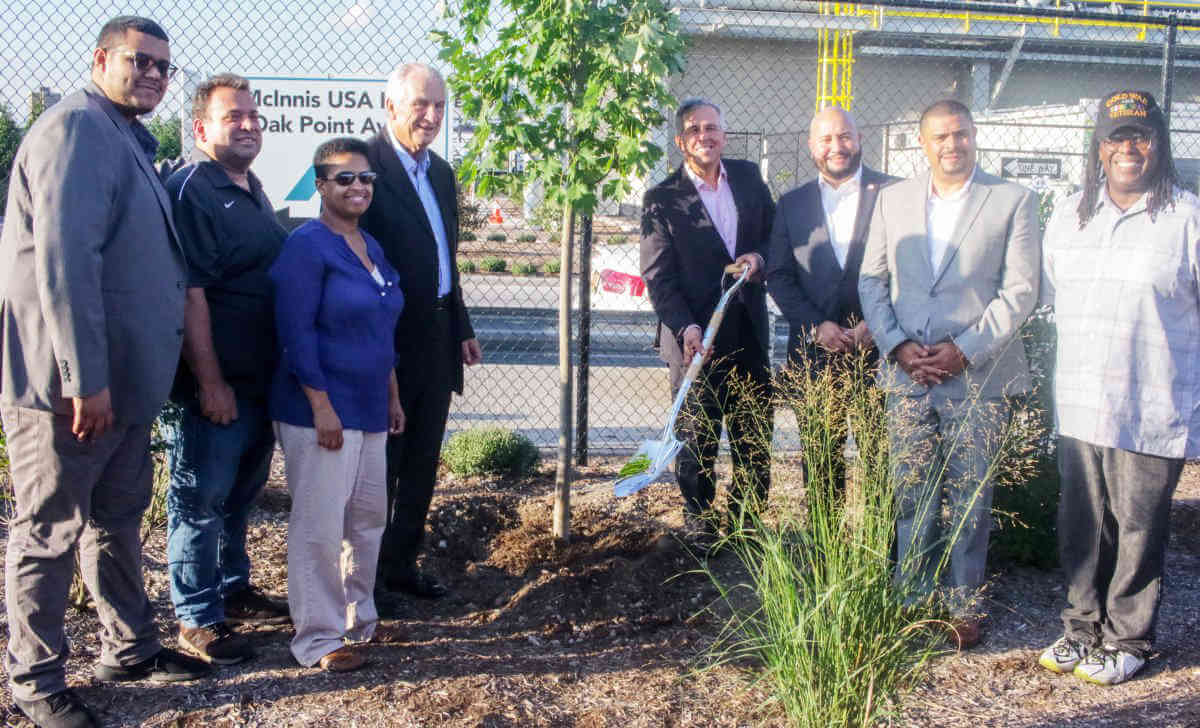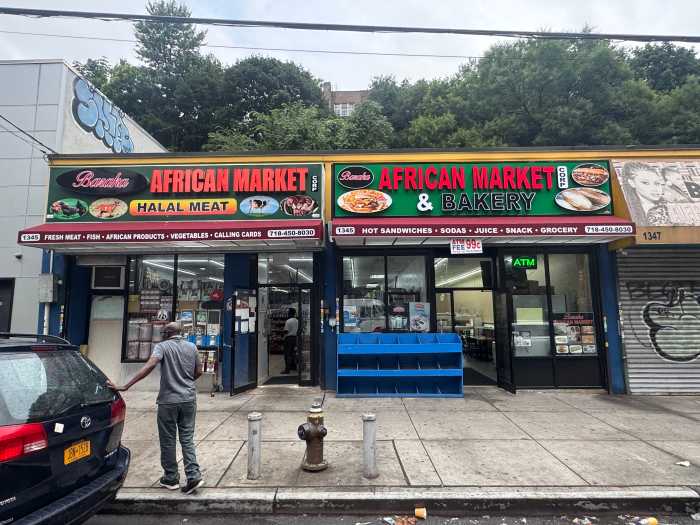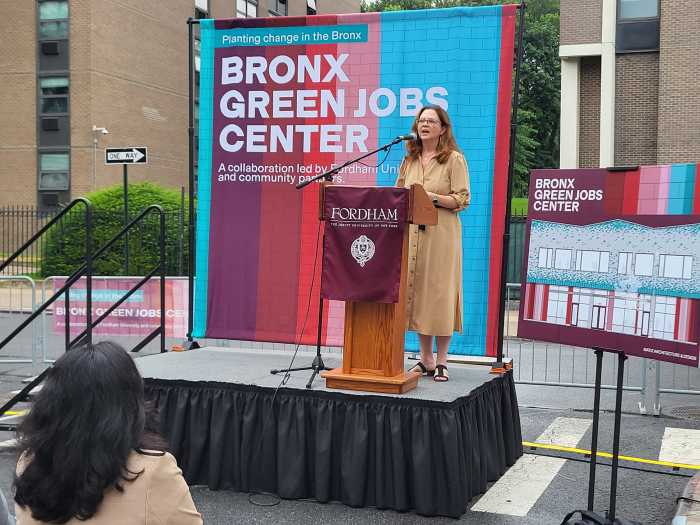McInnis is officially cemented into the Hunts Point waterfront.
The Canadian-based cement firm officially opened its new, innovative cement terminal at 50 Oak Point Avenue on Wednesday, October 10.
It is the first, new industrial maritime project on the south Bronx waterfront in more than 50 years.
The newly constructed 100,000-square-foot, 24/7 operational terminal is what McInnis calls “the ideal port location for storing and distributing cement in New York City and beyond.”
A first of its kind, McInnis Cement will be utilizing the East River waterway for 90% of its monthly deliveries of the finished product from its headquarters in Port-Daniel—Gascons in Quebec, Canada.
This waterway delivery system is expected to fill an onsite warehouse that can store up to 44,000 metric tons of material, thus eliminating 25,000 one-way truck trips and eliminating more than two million truck miles off Bronx roads annually.
“It’s a very strategic location for us, plus we have two dozen customers within 10 miles of the new facility,” said newly appointed McInnis president and CEO Jean Moreau while mentioning that quick and easy access to Manhattan is pivotal being that the island doesn’t have any cement plants currently.
Moreau also discussed his company’s deep interest in hiring locally within the Bronx as well as reserving jobs for veterans.
“We’ve shown interest in community involvement from the beginning of this project. The community is a pillar for our business and it is very important for us to hire local,” Moreau said.

Additionally, McInnis Cement is the first project to become certified through the Waterfront Alliance’s new, nationally applicable Waterfront Edge Design Guidelines.
Considered to be a ‘gold standard’ for resilient, ecologically-sound, and accessible waterfront design is to be used as a common language for higher industrial design standards for companies to come.
McInnis estimates that its eco-friendly distribution approach will also reduce cement delivery-related emissions in the area by 35%, bettering air quality.
“We recognize that the industrial impacts of trucking and emissions have harmed the South Bronx for too long, which is why we aim to make McInnis not only a new industrial distribution facility but an asset for the community,” Moreau said. “Our goal was to set a new standard for development in the New York City harbor, placing a major industrial operation in harmony with a natural wildlife habitat and providing waterfront access for the citizens of the south Bronx.”
Councilman and Land Use Committee chairman, Rafael Salamanca, Jr. was skeptical of the project at first, however after learning about the financial and environmental benefits that would be brought to Hunts Point he had a change of heart towards the company.
“I commend them on their endeavor and for creating a sustainable and resilient waterfront design with public accessibility,” Salamanca said.
This Hunts Point location has a long history with many uses over the years.
Dating back to the 1850s, the site was once a 19th century amusement park.
Prior to McInnis, the site was dormant and an illegal dumping ground for half a century.

























